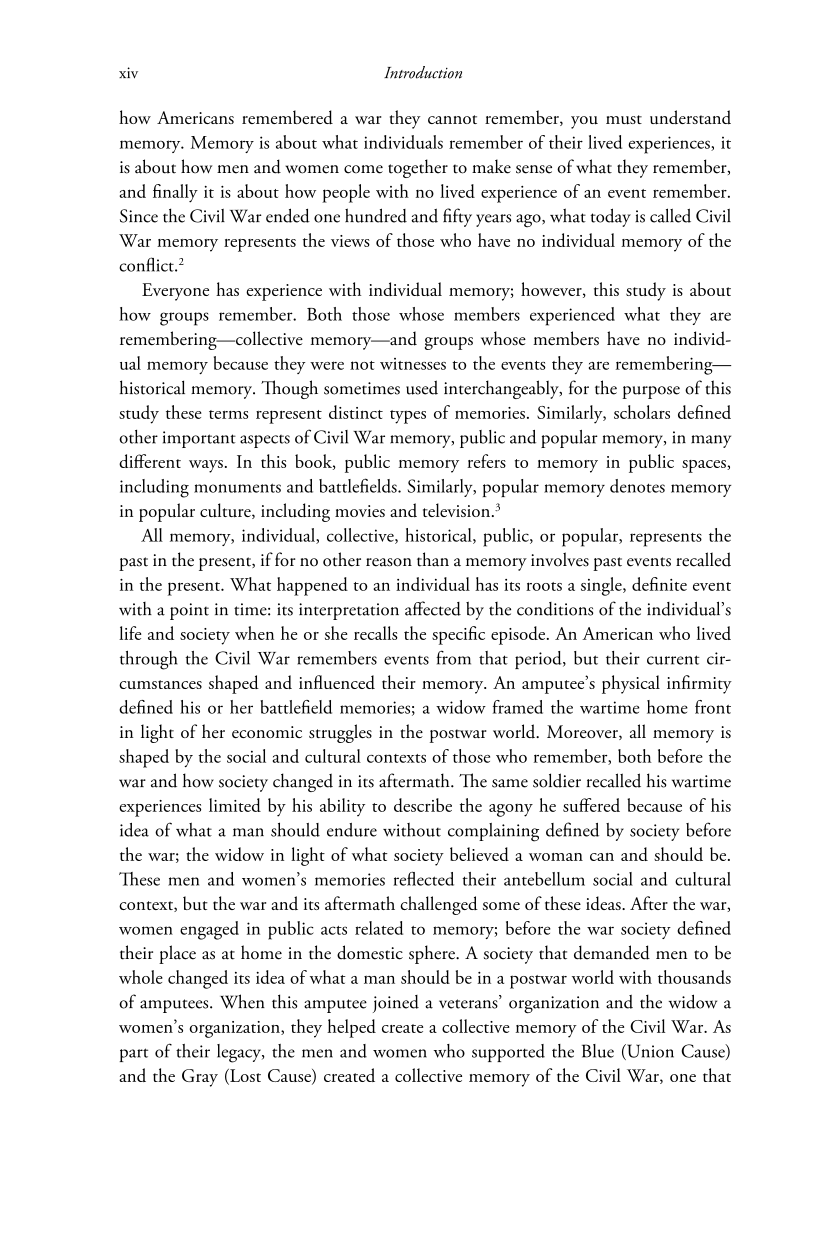xiv Introduction
how Americans remembered a war they cannot remember, you must understand
memory. Memory is about what individuals remember of their lived experiences, it
is about how men and women come together to make sense of what they remember,
and fi nally it is about how people with no lived experience of an event remember.
Since the Civil War ended one hundred and fi fty years ago, what today is called Civil
War memory represents the views of those who have no individual memory of the
confl ict.
2
Everyone has experience with individual memory; however, this study is about
how groups remember. Both those whose members experienced what they are
remembering—collective memory—and groups whose members have no individ-
ual memory because they were not witnesses to the events they are remembering—
historical memory. Th ough sometimes used interchangeably, for the purpose of this
study these terms represent distinct types of memories. Similarly, scholars defi ned
other important aspects of Civil War memory, public and popular memory, in many
diff erent ways. In this book, public memory refers to memory in public spaces,
including monuments and battlefi elds. Similarly, popular memory denotes memory
in popular culture, including movies and television.
3
All memory, individual, collective, historical, public, or popular, represents the
past in the present, if for no other reason than a memory involves past events recalled
in the present. What happened to an individual has its roots a single, defi nite event
with a point in time: its interpretation aff ected by the conditions of the individual’s
life and society when he or she recalls the specifi c episode. An American who lived
through the Civil War remembers events from that period, but their current cir-
cumstances shaped and infl uenced their memory. An amputee’s physical infi rmity
defi ned his or her battlefi eld memories; a widow framed the wartime home front
in light of her economic struggles in the postwar world. Moreover, all memory is
shaped by the social and cultural contexts of those who remember, both before the
war and how society changed in its aftermath. Th e same soldier recalled his wartime
experiences limited by his ability to describe the agony he suff ered because of his
idea of what a man should endure without complaining defi ned by society before
the war; the widow in light of what society believed a woman can and should be.
Th ese men and women’s memories refl ected their antebellum social and cultural
context, but the war and its aftermath challenged some of these ideas. After the war,
women engaged in public acts related to memory; before the war society defi ned
their place as at home in the domestic sphere. A society that demanded men to be
whole changed its idea of what a man should be in a postwar world with thousands
of amputees. When this amputee joined a veterans’ organization and the widow a
women’s organization, they helped create a collective memory of the Civil War. As
part of their legacy, the men and women who supported the Blue (Union Cause)
and the Gray (Lost Cause) created a collective memory of the Civil War, one that
































































































































































































